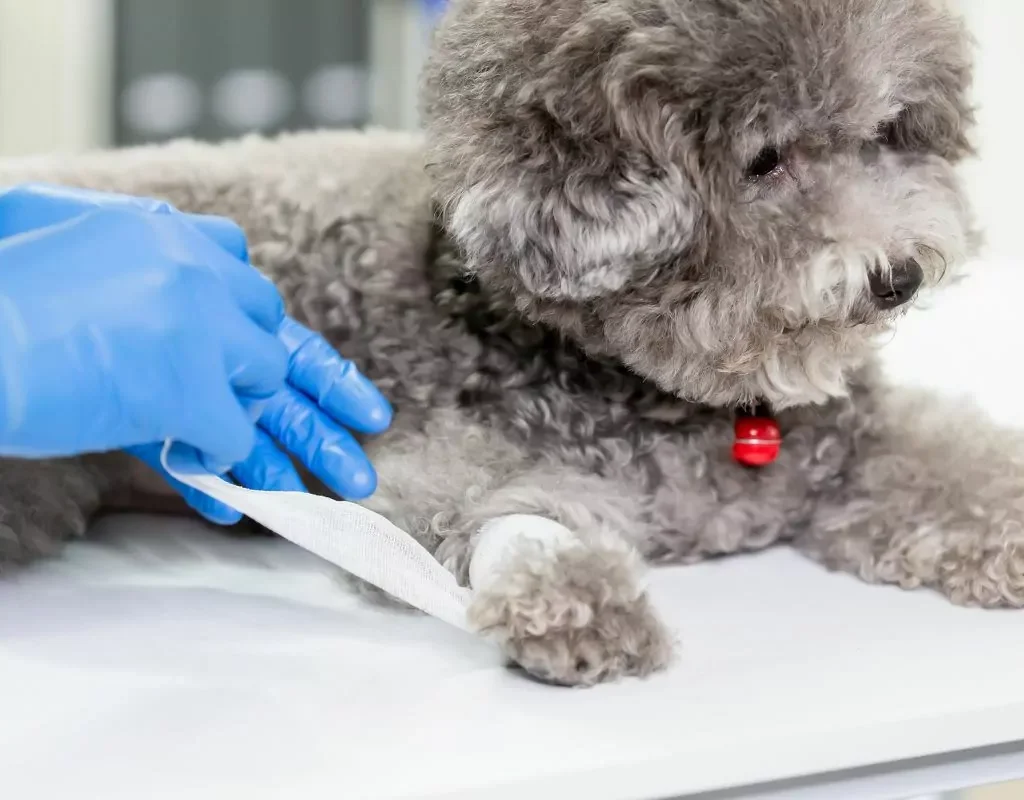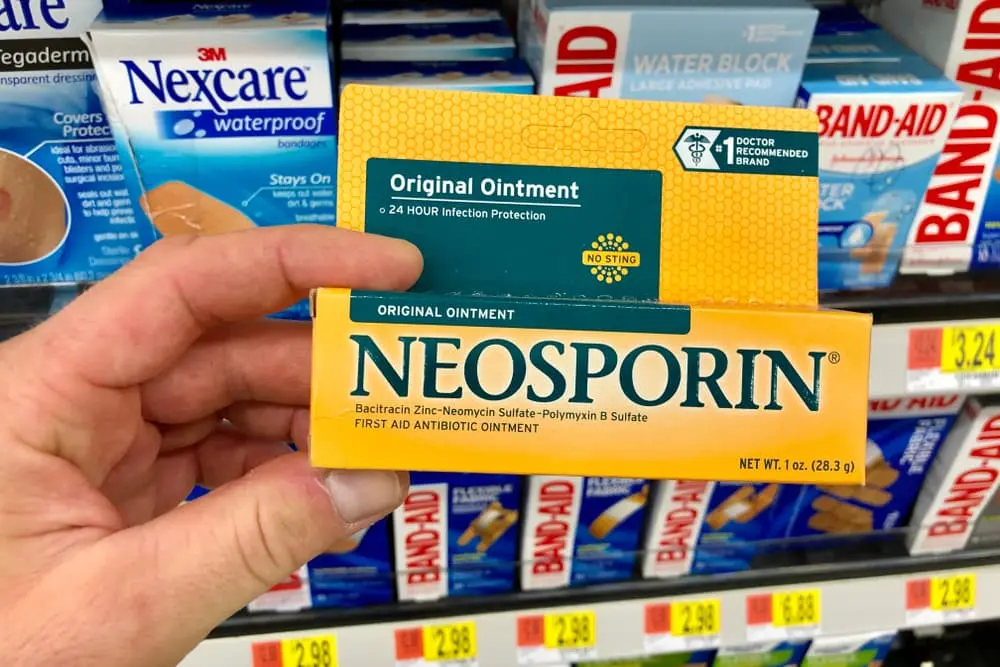Dogs are our loyal companions, and their health and well-being are paramount. In moments of minor injuries or skin issues, many pet owners reach for a familiar tool in their first aid kit – Neosporin. But can be safely used Neosporin on dogs? Let’s delve into this mystery and unravel the complexities surrounding the application of Neosporin on our furry friends.

Neosporin Ingredients and Safety for Dogs
Neosporin, a popular over-the-counter antibiotic ointment, contains key ingredients like bacitracin, neomycin, and polymyxin B. While these components are generally safe for humans, concerns arise when applying them to our canine companions. Dogs may have allergies or adverse reactions to certain ingredients, emphasizing the need for caution.
To ensure safety, pet owners should follow specific guidelines when using Neosporin on dogs. Consulting with a veterinarian before application is advisable, especially if the dog has a history of skin sensitivities.
Common Dog Ailments and Neosporin Application
Neosporin proves useful in treating minor cuts, wounds, skin infections, and even insect bites on dogs. The application process involves cleaning the affected area and applying a thin layer of Neosporin. However, it’s essential to recognize that not all canine injuries require this antibiotic ointment. Understanding the specific ailments that Neosporin can address is crucial for responsible usage.
Alternatives to Neosporin for Dogs
While Neosporin is a widely recognized first aid solution, alternative remedies exist. Natural options like aloe vera and coconut oil can provide relief without potential side effects. Veterinarian-prescribed ointments tailored to canine needs are also available, offering a balanced approach to wound care.

Pet owners must weigh the pros and cons of different treatment options, considering the individual needs and health history of their dogs.
Risks and Misconceptions
As with any medication, overuse of Neosporin can lead to concerns. Pet owners should be mindful of potential side effects, such as itching, redness, or swelling. Misconceptions about Neosporin’s miraculous healing powers may lead to inappropriate use. Dispelling these myths is essential for promoting responsible and effective pet care.
Tips for Applying Neosporin Safely
To ensure the safe application of Neosporin on dogs, pet owners should clean the affected area thoroughly before applying the ointment. Monitoring for adverse reactions and seeking veterinary advice in case of uncertainty are critical steps in the process. An informed approach enhances the effectiveness of Neosporin while minimizing potential risks.

Real-Life Experiences
The experiences of pet owners using Neosporin on their dogs vary. Success stories highlight the positive impact of timely and appropriate Neosporin application. Conversely, cautionary tales shed light on instances where misuse or neglect led to complications. Community insights play a crucial role in guiding pet owners toward responsible Neosporin usage based on real-life experiences.
Neosporin: A Versatile Tool in Your Dog’s First Aid Kit
As part of a comprehensive canine first aid kit, Neosporin plays a versatile role. Understanding its place in emergency care equips pet owners to handle minor injuries promptly. However, responsible pet care extends beyond Neosporin, emphasizing the importance of having a well-stocked first aid kit with other essentials like bandages, antiseptic wipes, and contact information for the nearest veterinary clinic.
Conclusion
In conclusion, the mystery surrounding the use of Neosporin on dogs is unraveled through careful consideration of its ingredients, safe application, and alternative options. Responsible pet ownership involves staying informed, seeking professional advice, and tailoring treatment to the specific needs of our furry companions.
Frequently Asked Questions
- Can I use Neosporin on all types of wounds in dogs? Neosporin is suitable for minor cuts and wounds, but severe injuries may require veterinary attention. Always consult your vet for guidance.
- What should I do if my dog shows an allergic reaction to Neosporin? If your dog exhibits signs of an allergic reaction, such as itching or swelling, cease Neosporin use and consult your veterinarian immediately.
- Are there any natural alternatives to Neosporin for dogs? Yes, natural remedies like aloe vera and coconut oil can be effective alternatives. Consult your vet for guidance on the best option for your dog.
- Can I use Neosporin on my dog without consulting a vet? While Neosporin is generally safe, it’s advisable to consult your vet before usage, especially if your dog has allergies or a history of skin issues.
- How can I build a comprehensive first aid kit for my dog? A well-stocked first aid kit should include Neosporin, bandages, antiseptic wipes, and emergency contact information for your vet. Regularly check and replenish the supplies.
